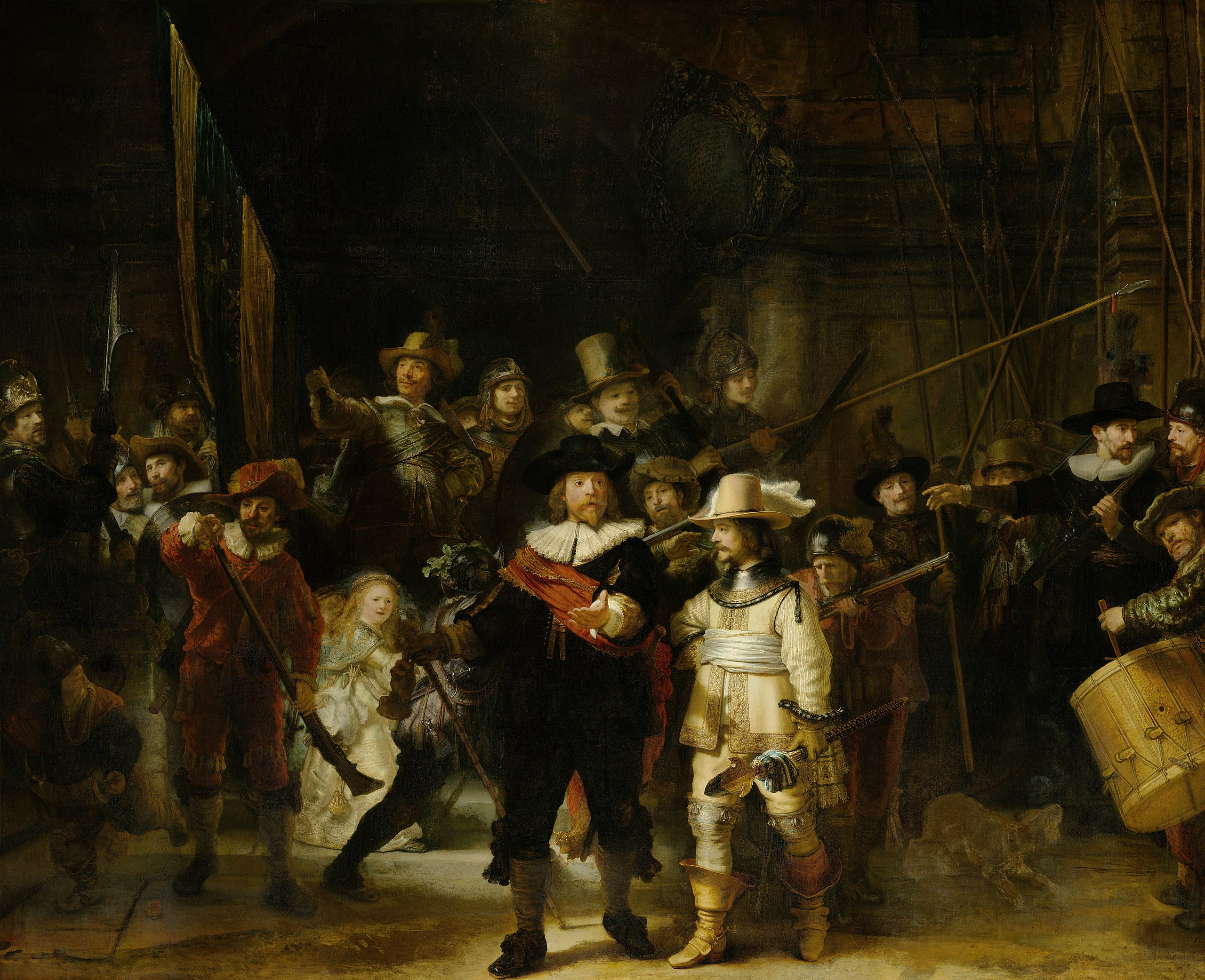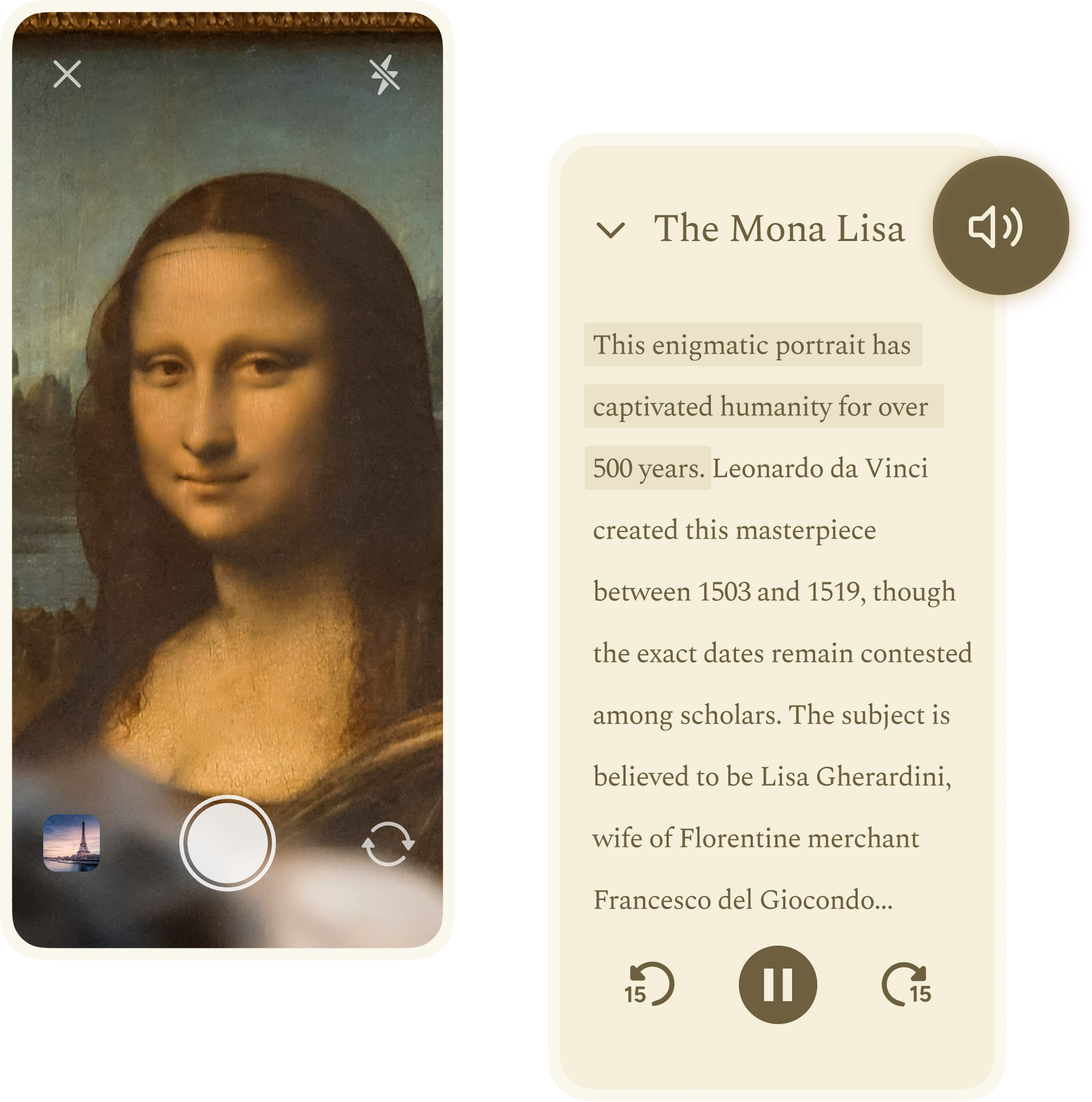The Night Watch
Unveiling the hidden meanings in Rembrandt's masterpiece

Standing prominently in Amsterdam's Rijksmuseum is a painting so commanding that it has its own dedicated wall and room: Rembrandt van Rijn's "The Night Watch." Despite its popular nickname, it isn't actually a night scene at all. And despite its seemingly straightforward depiction of a military company, it contains layers of meaning, revolutionary artistic techniques, and subtle storytelling that have captivated viewers for nearly four centuries.
Let's explore what makes this monumental work one of the most significant paintings in Western art history and decipher the numerous mysteries and meanings hidden within its dynamic composition.
The Painting's True Identity
First, let's clear up a common misconception. "The Night Watch" isn't the painting's actual title. Its formal name is "Militia Company of District II under the Command of Captain Frans Banninck Cocq," or sometimes "The Shooting Company of Frans Banning Cocq and Willem van Ruytenburch." The more familiar nickname came about because, over time, layers of dark varnish and centuries of dirt made the canvas appear much darker than Rembrandt intended. When the painting was cleaned in the 1940s, viewers were surprised to discover it depicted a daytime scene.
Painted in 1642, this massive canvas (measuring approximately 12 by 14 feet) was commissioned as a group portrait of a civic guard company: essentially a local militia of prominent citizens who served as Amsterdam's volunteer city guard. Such group portraits were popular status symbols in the Dutch Golden Age, typically showing the subjects in formal, static poses.
But Rembrandt, always the innovator, transformed what could have been a standard group portrait into a dynamic, action-filled scene that broke virtually every convention of the genre.
Revolutionary Composition
What immediately strikes viewers about "The Night Watch" is its sense of movement and action. Unlike traditional group portraits where subjects stood in rigid, formal poses (often in neat rows), Rembrandt's militia members are caught in mid-motion:marching, loading weapons, bearing flags, and engaging with one another.
The painting captures a specific moment: Captain Cocq (in black with a red sash) is giving the order to march out, with his lieutenant Willem van Ruytenburch (in yellow) at his side. Around them, their company mobilizes in a flurry of activity.
This dynamic approach was revolutionary. Rembrandt transformed a commissioned group portrait into a narrative scene with dramatic lighting, creating depth through his pioneering use of tenebrism—strong contrasts between light and dark—that directs the viewer's attention to specific figures and details.
The composition itself tells a story. The painting has a clear left-to-right movement, with the central figures stepping forward toward the viewer. This creates a three-dimensional effect that was highly unusual for its time, almost as though the company might march right out of the frame.
Symbolic Details and Hidden Meanings
Look closer, and "The Night Watch" reveals numerous symbolic elements and meaningful details:
The Girl in Gold
Perhaps the most enigmatic figure is the small golden-dressed girl visible in the mid-left of the painting. She doesn't belong in a military company, yet Rembrandt placed her prominently in the composition. She carries a chicken claw (the emblem of the militia), wears the company's colors, and has a pistol hanging from her belt.
Art historians believe she represents a mascot or symbolic figure, perhaps a personification of the militia itself. Her bright clothing makes her stand out against the darker figures, and she's the only female in the painting (though recent restorations and technologies have revealed there may have been another female face that was painted over).
The Captain's Gesture
Captain Cocq's outstretched hand makes a specific gesture that would have been recognizable to 17th-century viewers as a traditional rhetorical pose indicating leadership and command. His placement at the center of a shaft of light emphasizes his authority.
Weapons and Military Details
Rembrandt meticulously depicted various weapons of the era—muskets, pikes, halberds, and a partisan (ceremonial spear), showing his attention to technical detail. Each guard carries the weapon appropriate to his position in the company. The painting even includes a guard demonstrating the complex 16-step process of loading a musket, with different militiamen showing different stages of the procedure.
The Dog
A small dog appears at the bottom right of the canvas. Dogs in Dutch paintings often symbolized loyalty and fidelity, appropriate attributes for a civic guard dedicated to protecting the city.
Names on a Shield
In the upper right is a shield containing the names of the militiamen who paid to be included in the portrait. This was standard practice for group commissions, where each subject contributed to the artist's fee based on their prominence in the final painting.
Innovations in Light and Shadow
Rembrandt's mastery of light is particularly evident in "The Night Watch." He uses dramatic illumination to guide the viewer's eye to important elements:
- The bright figures of Captain Cocq and Lieutenant van Ruytenburch stand out immediately
- The mysterious girl in gold catches our attention among the darker-clothed men
- A glow surrounds the lieutenant's outstretched hand, emphasizing his gesture
- The face of the musketeer in red, firing his weapon, is dramatically lit
This sophisticated use of chiaroscuro (strong contrasts of light and dark) creates a theatrical quality that transforms a potentially static subject into a dynamic scene filled with drama and movement.
The Historical Context
To fully appreciate "The Night Watch," we need to understand Amsterdam in the 1640s. The Dutch Republic was experiencing its Golden Age, a period of extraordinary wealth, cultural flowering, and global trade power. Amsterdam was one of Europe's richest cities, and its prosperous merchants displayed their status through art patronage.
The civic guards depicted weren't professional soldiers but prominent citizens: merchants, craftsmen, and professionals who served voluntarily as the city's militia. Their companies were as much social clubs as military units, gathering for banquets, parades, and shooting competitions.
By the time Rembrandt painted them, these militias had a largely ceremonial role, which explains why he could take creative liberties with their portrayal. Still, membership remained prestigious, and having your portrait in a group commission was an important status symbol.
Reception and Legacy
Contrary to popular belief, "The Night Watch" was well-received when unveiled, not rejected by its subjects. The myth that Rembrandt's career declined afterward because the militiamen were unhappy with their portrayal is not supported by evidence. The painting hung proudly in the militia's headquarters until it was moved to Amsterdam's Town Hall in 1715.
Over time, "The Night Watch" has survived remarkable challenges:
- In 1715, when moved to the Town Hall, sections of the canvas were cut off to fit its new location (primarily on the left side and top)
- In 1911, a man with a knife attacked the painting but only penetrated the varnish layer
- During World War II, it was carefully hidden in a bunker to protect it from Nazi looting
- In 1975, it survived another knife attack
- In 1990, a man sprayed acid on the painting, but quick-thinking guards minimized the damage
Each restoration has revealed new details about the original work. The most recent restoration project, "Operation Night Watch," begun in 2019, uses cutting-edge technology to study the painting in unprecedented detail, revealing Rembrandt's original color choices, underpainting, and even changes he made during the creative process.
Influence on Art History
"The Night Watch" transformed group portraiture and influenced generations of artists. Its innovations include:
- Breaking away from static, formal portrait arrangements
- Using dramatic light to create focus and mood
- Incorporating narrative elements into a portrait format
- Creating a sense of movement and action
- Employing psychological characterization rather than mere physical likeness
These techniques would influence artists from Francisco Goya to Édouard Manet, and even modern filmmakers who study Rembrandt's masterful use of light and composition.
Experiencing The Night Watch Today
Today, "The Night Watch" occupies the place of honor in the Rijksmuseum's Gallery of Honor. Watching visitors encounter it for the first time is almost as interesting as studying the painting itself. People invariably slow down, then stop, captivated by its power and presence.
The painting rewards extended viewing. At first glance, you notice the central figures and the overall sense of movement. Stay longer, and you begin to appreciate individual faces, subtle interactions between figures, and the masterful handling of light. Return again, and you might discover details you missed before—the small dog, the girl in gold, the drummer partially hidden in shadow.
This layered experience is precisely what makes "The Night Watch" so enduring. It's not a painting that reveals itself all at once but rather invites repeated viewing and contemplation.
Beyond the Canvas
What continues to fascinate viewers about "The Night Watch" is how it transcends its original purpose. Commissioned as a status symbol for wealthy militia members, it has become something far more significant: a masterpiece that captures the energy and confidence of a nation at its height, a technical tour de force that pushed the boundaries of what painting could achieve, and a work that continues to reveal new secrets even after nearly 400 years.
In Rembrandt's militia men, we see not just portraits of specific individuals from 17th-century Amsterdam but also archetypal human characteristics — leadership, camaraderie, pride, attention, distraction — rendered with such psychological insight that they remain immediately recognizable across the centuries.
Visiting the Rijksmuseum to see "The Night Watch" in person? Enhance your experience with the Guide app, which transforms your smartphone into a personal art historian. Simply take a photo of the painting, and instantly receive expert audio commentary about its history, hidden details, and artistic significance.
